Top 10 Coolest Facts About Scorpions
We're taking another break from the darkness that my lists have mostly emulated, post Top 10 Worst Parts of the Dark Ages. While I'm sure you'd prefer me doing projects on other creatures, Scorpions have some some interesting facts about them. Behold what makes Scorpions amazing: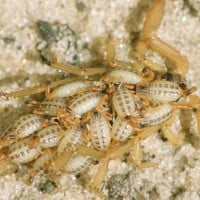
Unlike insects, which usually lay eggs, scorpions give birth to live babies, through viviparity. Some scorpions develop from inside a membrane, where they get food,drink and other forms nourishment from the yolk of their eggs and directly from their mothers. Other species of scorpions grow without a membrane and receive nourishment directly from their mothers. For scorpions, the gestational stage (or put simply, how long the conception is,) can be as short as two months, or as long as eighteen months, depending on the species of scorpion. After birth, the newborn scorpions ride on their mother's back, not only to keep them safe, but because it's not much of a burden for the mother scorpion. They do so until they molt, or shed their skin for the first time. After they molt, or shed their skin for the first time, they are on their own

If you had a time machine, and went back in time three hundred million years, you would see ancient scorpions do not appear very different from to the modern day species living all around the world these days. Fossils show that scorpions have not changed much since the Carboniferous period, which started about 300 million years ago, and ended in around 250 million years ago. The ancestors of today's scorpions more than likely lived in the seas, and may possibly have had gills. By the Silurian period, about four hundred and twenty million years ago, some of these creatures had adapted to their environments so the could live way on land, or in the sea. Early scorpions may have had compound eyes, like that of an insect, as opposed to eyes of arachnids.
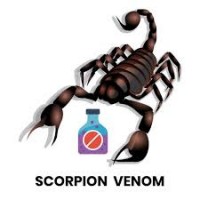
We dismiss them for being lethal, because their venom does indeed kill, but hear me out. Extensive research has shown plenty of helpful parts of scorpion venom, deeper inside the scorpions.
Scorpion venom has already proven to be a font for biomimicry in medical aspects, and countless more remain undiscovered.
Venom from deathstalker scorpions contains chlorotoxin, which has been the catalyst for new approaches for diagnosing and treating certain cancers. Venom from your typical Asian scorpion has antimicrobial peptides which may be great for fighting bacteria, fungi, malaria parasites, and even arthritis. Other scorpion venom compounds have also shown to have some important medical purposes.
Scorpions engage in a peculiar ordeal that scientists have dubbed "the promenade à deux" which in English is simply "a walk for two." This dance starts when the male and female make touch, not that different from humans. The male takes his partner by her and smoothly walks her back and forth until he finds a proper location to deposit his sperm. Once he finds a place to put his sperm he leads the female over it and positions her so she can practically absorb the sperm. The dance lasts in some cases for just a couple of minutes to a couple of hours, depending on the species of scorpion.
But this never ends well for the male. In the wild, the male leaves the female, and in captivity the female eats the male.
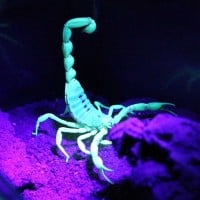
Scorpions glow under ultraviolet light. Scorpion skin, referred to as cuticles, absorbs UV light and reflects it as visible light, making the scorpion glow. This makes research on Scorpions much easier for scientists. They just wait for nightfall in a scorpion habitat and the scorpion lights up. Despite knowing of about 600 scorpion maybe a few decades ago, in 2022, scientists have recorded information on almost 2,000 scorpions species, by using UV lights to get the location of the scorpion. Scorpions which recently shed their skin don't glow in the dark, because their cuticle is then soft and doesn't have the substances that cause fluorescence, or glowing. Even scorpion fossils can still glow, after hundreds of millions of years they were stuck in stone.
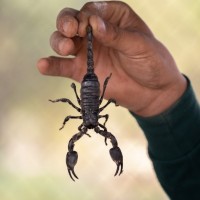
Sure, scorpions can sting, and being stung by a scorpion isn't exactly fun. But truth be told, scorpions can't harm humans as severely as implied. Of the 2,000+ known species of scorpions known today, only 25 have venom poisonous enough to kill an adult human. Children are at higher risk of death via scorpion venom, just because they're, generally speaking, smaller in size than adults. In the States, there's only one scorpion that is a big threat to adults. This is the Arizona bark scorpion. The Arizona bark scorpion has venom strong enough to kill a little kid. Even so, there is antivenom available for this, where the Arizona bark scorpion resides, so casualties are still uncommon.
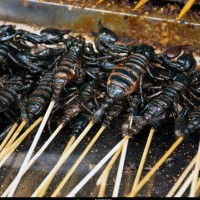
Scorpions are considered delicacies in many countries, such as China and Vietnam. Depending on geography, they may be consumed in different ways. If you're in rural China, kids and adults will go hunting for scorpions, but in urban areas, they're simply sold as snacks, like a hot dog in New York. Although scorpions are not easy to find during the day, they are very easy to find at night, given they hunt at night. Well, that, and at night if an ultra violet flashlight on shines on the scorpion, they glow when found, since they glow in the dark. When seasoned hunters catch them, they usually wear gloves, to avoid getting stung, and they pick them up by their tails. It may be a shocker, or it might be common knowledge, depending on who you ask but, you can even eat the stinger. A short time after the scorpion is killed, the poison in the venom becomes chemically immobile and can't harm you.
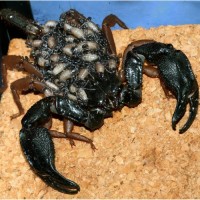
The average lifespan of any arachnid is about two or three years. Not exactly what you would call a long lifespan to begin with, especially in contrast with most mammals or other creatures that have high lifespans, but if you zero in on certain groups of arachnids, that's when things get a little interesting. If you focus in on the average lifespan of spiders, it's still about two years, but if you focus in on scorpions, not only do they exceed the average lifespan of spiders by about four years, but many scorpions can get a much longer lifespan, which can reach, and from time to time, exceed twenty years of age, although that is much more likely to happen in the wild, as opposed to in captivity, despite that usually going in the opposite direction for most other animals.
This is something that I mentioned in a separate part of this list. While they mostly stick to eating spiders, centipedes, flies, and other insects, it is not un heard of for scorpions to eat other scorpions. It's mostly a grown female scorpion that is a cannibal. Left in captivity, some scorpions will eat their mate. And in the wild, if a mother scorpion cannot find enough insects, shrubs, spiders and so on to feed both herself and her babies alike, she will indeed eat her offspring. Fortunately, this is only a last resort, and scorpions otherwise only prey on bugs and shrubs. But survival of the fittest can and will kick in, if needed. Otherwise, mother scorpions are caring mothers.
This is when two or more male scorpions find a female they want to mate with. Really there's nothing new to this. Giraffes slam each other with their necks, to fight over mates, scorpions sting each other. Nature has this down pat.
Okay, I am obviously not talking about the Indian red scorpion, the Arizona bark scorpion, or any type that is venomous. I am simply talking about the harmless breeds. Pet scorpions can be educational ways for people to learn more about them, and both scorpions that live in the forest or live in the desert, with acouple of exceptions here and there. They are considered beginner level pets, by the professionals who sell them. The breeds that are sold as pets (the Emperor scorpion, Tanzanian red-clawed scorpion, and Malaysian black scorpion, to name a few) are relatively obedient and usually do not become aggressive unless they feel that they are in danger. And when they shed their skin for their first time, it could scare people who are new to having pet scorpions, because the shed skin looks like a dead scorpion. Other than that, they're great pets, from what I've heard.